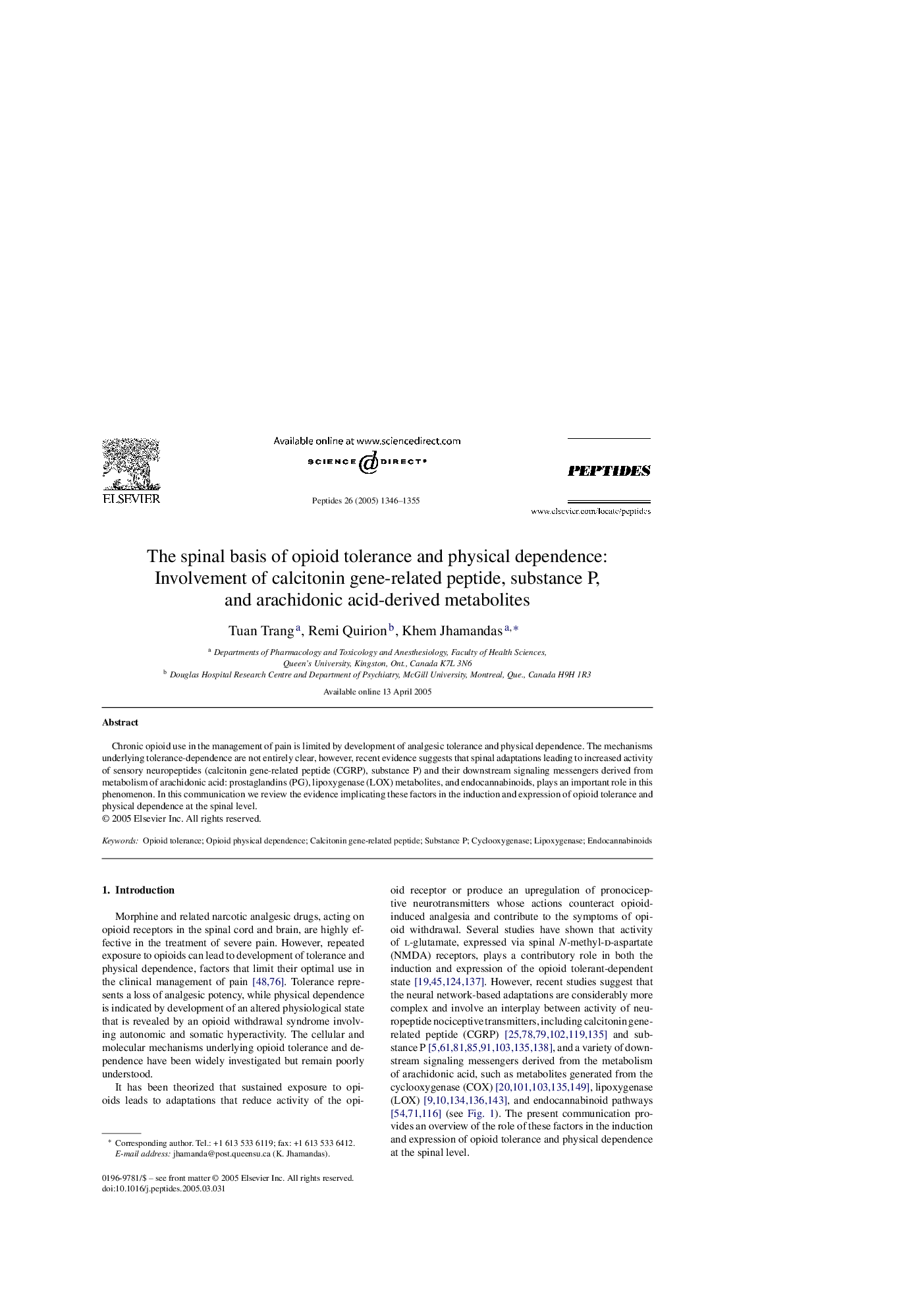| Article ID | Journal | Published Year | Pages | File Type |
|---|---|---|---|---|
| 10836129 | Peptides | 2005 | 10 Pages |
Abstract
Chronic opioid use in the management of pain is limited by development of analgesic tolerance and physical dependence. The mechanisms underlying tolerance-dependence are not entirely clear, however, recent evidence suggests that spinal adaptations leading to increased activity of sensory neuropeptides (calcitonin gene-related peptide (CGRP), substance P) and their downstream signaling messengers derived from metabolism of arachidonic acid: prostaglandins (PG), lipoxygenase (LOX) metabolites, and endocannabinoids, plays an important role in this phenomenon. In this communication we review the evidence implicating these factors in the induction and expression of opioid tolerance and physical dependence at the spinal level.
Keywords
Related Topics
Life Sciences
Biochemistry, Genetics and Molecular Biology
Biochemistry
Authors
Tuan Trang, Remi Quirion, Khem Jhamandas,
